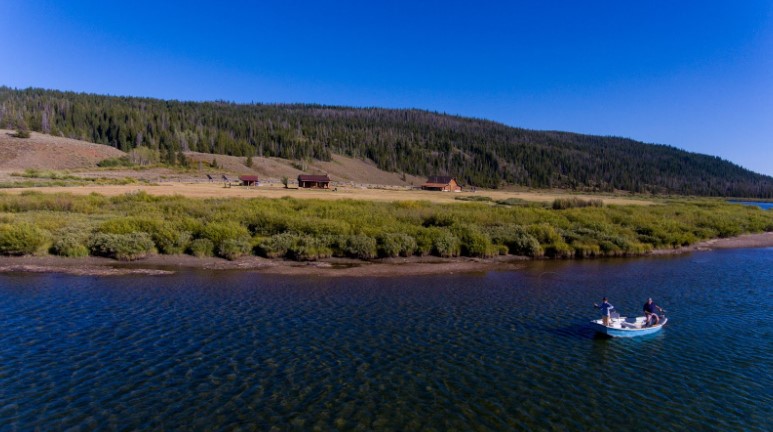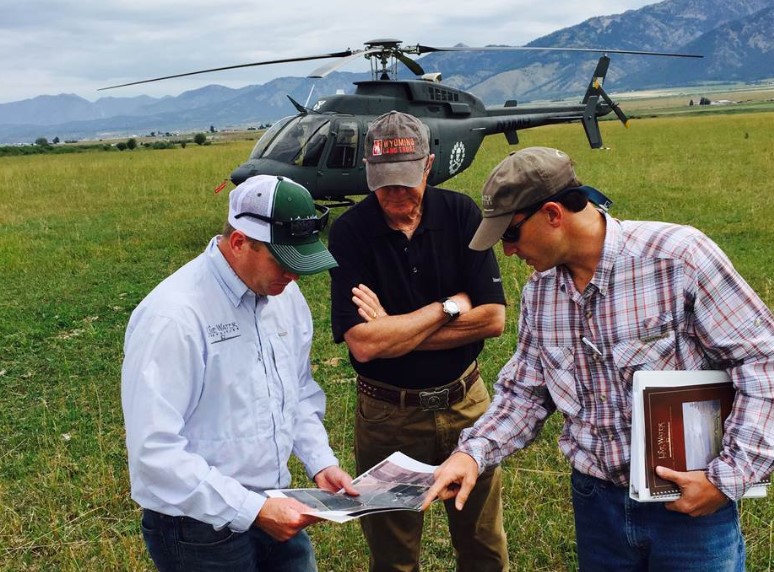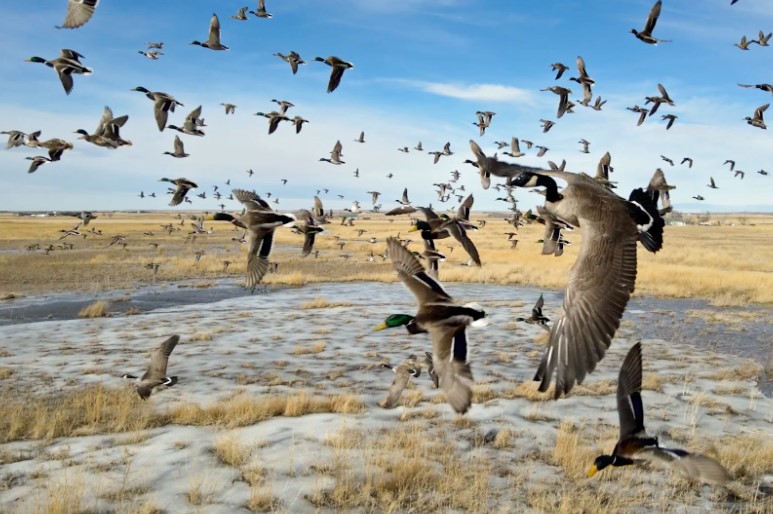Ranches and farms are some of the most worthwhile and secure investments you can make. Not only do you get to live in a luxurious and spacious property incomparable to what many investors have ever had before, but you get to live a more natural rhythm of life, reconnect to the land and fully pursue interests such as fishing and hunting or raising livestock and producing goods. Add to this the possible returns in investment that can be gained by ranches and farms and it’s easy to see why so many are turning to these types of property for their next investment.
However, how do you get started with ranch investments? What are the benefits that come with investing in ranches and farms? And what are the risks involved in this enterprise?
Continue reading as we lay down everything you need to know and consider regarding ranch investments, especially in places like Wyoming, Montana, Colorado, and Texas.
Table of Contents:
What are the main types of ranch investments?
Cattle Ranches – One of the most common forms of ranch investments, ranching typically involves raising livestock such as cattle, horses, and sheep on expansive tracts of farmland. Aside from common livestock, animals like American bison, alpaca, and elk — as well as exotic birds like ostriches and emu — may also be raised.
At present, most of the working ranches in the United States are typically used in the production of meat, milk, wool, and other animal products. Some ranches in the country, however, have branched out to agrotourism and also offer attractions such as cattle drives, horseback rides, and guided hunting.
Ranching is especially popular in Texas, which is home to about 248,000 farms and ranches, all of which have a combined area of 127 million acres.
Farms – According to the Department of Agriculture, there are about 2.1 million farms spread throughout the U.S., the majority of which are family-operated. Farms in the U.S. typically have an area of about 435 acres, although there are some whose total area exceeds 2,000 acres.
Most farms in the U.S. grow grains such as corn, wheat, barley, and oats, while some grow crops like soybeans, as well as vegetables, fruits, and various other types of produce. Because of the demand for their products, farms are incredibly lucrative ventures, with crop cash receipts from US farms totaling $198.8 billion in 2020.
Fly Fishing and Hunting Properties – Ranch investments also cover properties and attractions that offer fly fishing, hunting, and similar activities to visitors. Fishing and hunting properties are particularly appealing to those who love the great outdoors and the sporting lifestyle, and— much like farms and ranches — come in a wide range of sizes, amenities, and features. For instance, some properties span thousands of acres and include exclusive, luxury lodgings, while some offer a more rugged and rustic experience for buyers.
Roughly 18% of the entire U.S. population, that’s 54.7 million Americans, went on fishing trips in 2020. Hunting is also very popular with 15 million Americans participating in hunting trips in 2020. This can be turned to your advantage. Not only will you enjoy your own hunting and fishing ranch, you can open your property to visitors and generate income. Having recreational activities on your ranch enhances the lifestyle you lead and adds value to your agricultural property.
If you are planning to invest in these types of properties, Montana, Colorado, and Wyoming have some of the best land for fly fishing and hunting in the U.S.
Conservation Ranches – For the most part, conservation quality ranches function just like standard working ranches and farms. These properties, however, employ conservation strategies and sustainable farming practices, both of which help preserve and enhance the land and its resources, promote healthy biodiversity, and help carry on their legacy for future generations.
Entering into a voluntary legal agreement such as conservation easements and land trusts safeguard the ranch’s character and natural resources. However, a much more immediate benefit for the owner is that they can realize tax and or cash benefits, sometimes both. Furthermore, partnership with a local trust gives a new landowner access to expert knowledge and the tools needed to manage the property in a wildlife-friendly and resource efficient manner.
Other types of ranch investments include the following:
- Plantations
- Timber Farms
- Sporting Ranches
- Equestrian Properties
What makes ranches and farmland great investments?
Ranches and farmland are great investments, not only because of the positive combined returns that they deliver to investors but because of how effective they are at hedging inflation compared to other forms of investments like gold and stocks.
Ranches and farms have the ability to provide extra income, which means that investors remain well-protected — even in times when the prices of goods rise and the purchasing power of the dollar decreases. Not only that, but the world’s supply of arable land is decreasing at a steady rate, driving up both the demand for ranch investments and their value.
They are less volatile investments when compared to other major assets, making them especially valuable to those who wish to diversify their portfolios.
Another major plus is that ranches and farmland – depending on which state they’re located in – come with tax breaks and benefits that investors can take advantage of to maximize their earnings.
For instance, Montana allows deductions of up to $50,000 on capital gains – provided that the property covers more than 80 acres, and the sale is done via a long-term, state-approved contract. Colorado, on the other hand, exempts several agriculture-related items from taxes, including farm and livestock equipment, electricity and fuel costs, and proceeds from farm close-out sales.
Wyoming does not tax properties such as farms and ranches based on their market value, but rather, on the agricultural products that they produce. The value of these products are then calculated at a fractional rate of 9.5% — resulting in massive savings for qualified investors. Texas employs a similar tax scheme for agricultural properties, with ranches and farms taxed based on what they can produce rather than their land’s market value. Not only that, but Texas also exempts farm owners and investors from paying state and local sales taxes on most of the items they buy and use for their properties.
What are the past trends and future prospects of ranch investments?
The demand for ranch investments exceeded expectations in 2021, with sales of multi-million dollar ranching properties reaching record-setting numbers.
Real estate professionals place the increase in the sales of ranch investments and other agricultural properties in places like Montana, Colorado, Wyoming, and Texas in 2021 on several important factors. These include the migration of buyers from cities to rural areas, a shift in the U.S. political environment, and stronger overall economic conditions.
As noted by several real estate agents, a significant chunk of the sales made in 2021 were off-market transactions — a scenario largely driven by a combination of limited inventories and buyers wanting to find properties that match their specific wants, needs, and investment goals.
This uptick in the demand for ranch investments and similar agricultural properties is likely to continue in 2022. Interested buyers, however, might find it difficult to get ahold of agricultural properties, especially since land inventory in several states is currently at an all-time low, resulting in a highly competitive real estate market.
Buyers may also see stiff competition from foreign investors, whose interest can often drive up property values to unprecedented heights.
The good news, however, is that current ranch investors are still likely to see healthy returns from their properties this year, with the net farm income for 2022 projected to be at $113.7 billion – only a slight dip from the $119.1 billion recorded in 2021.
What are the nuts and bolts of acquiring ranches?
Acquiring ranches and large land properties can be a complicated affair. Because of this, it is important that you follow certain guidelines, including the following:
- Find a realtor who specializes in ranch investments – One of the smartest things to do is find a real estate professional who specializes in farmland and ranches. Getting the right support at the beginning can save you time and effort, open your options and guide you to the ideal property for you.They must be experts regarding the type of property you want to develop, or at least have a working knowledge of the activities you want to pursue, such as angling, hunting, or farming.
Ideally, you want to work with agricultural real estate professionals who are not only about buying and selling residential real estate. Live Water Properties is made up of people who know the land and live the agricultural, outdoor and hunting life, we live what we sell. Being able to provide the support and know how on how to set and run your ranch or farm has earned us glowing testimonials from clients. We want them to enjoy their new properties and we’re more than happy to help in any way we can.
- Decide on the kind of ranch investment you desire – One of the first things you need to do before investing in a ranch or similar property is to zone in on what it will be used for, as well as how it fits with your current lifestyle and investment goals. For instance, if you’re just looking for a place that can function as a private retreat for your family, a small to mid-sized ranch might be more in line with your needs, rather than an expansive estate that may be more suited to investors looking who are interested in activities such as hunting or agriculture.
- Experts in the field – Once you have decided on the type of property you want, the next step is to find the right realtor for your particular type of ranch or farm.For example, if you want to get a fishing property, you’ll need a ranch broker who at the very least knows where there are great fishing waterways and what type of fish are predominant in those waterways. It should then also follow that they’ll know the rules and regulations in these particular areas. Likewise, if you are looking to invest in a hunting property, you’ll want a ranch broker that can get you up to speed with hunting regulations that may be in place in that area.
Aside from that, ranch brokers can provide you with nuanced information on factors that affect how you utilize your property, such as its location and accessibility, privacy, fencing, and improvements, as well as leases and conservation easements.
- Find a lender that specializes in ranch investments – If you will be financing your purchase, the next step is to look for reputable lenders who specialize in ranches and similar investments. This option is particularly helpful for those who may be planning to start dude or guest ranches, or luxury fishing and hunting establishments.If you are looking to start a standard cattle ranch or farm, another option is to approach the USDA’s Farm Service Agency, which offers Farm Ownership Loans to qualified individuals.
Ranch investment properties
When searching for ranch investments and similar real estate properties, it is important to choose the ones that best match your needs and overall investment goals.
To give a taste of what could be yours here are some properties to consider:
Available for purchase for the first time in four generations, this Bridger-Teton inholding sits 15 minutes from the Jackson Hole town square at the end of a private road. With its elevated location, the property enjoys stunning views of the Teton, Gros Ventre and Wyoming Ranges. Consisting of timber-framed lush mountain meadows, the 159 acres are divided into four parcels that capture the stunning views and have backdoor access to Munger Mountain and the southern Teton Range.
Priced at $25 million and composed mostly of timber-lined mountain meadows, Ross Plateau is not under any deed restrictions or conservation easements. As such, the property lends itself to a variety of uses and can be converted into family hunting ranches.
Ross Plateau is surrounded by the Bridger-Teton National Forest, home to an impressive variety of local fauna, including elk, deer, moose, and bald eagles.
Situated on the banks of the South Platte River in Colorado, Golden Eagle Ranch covers 2,074 acres and has extensive water resources, making it the perfect property for those who want to hunt waterfowl.
In operation for the last thirty years, Golden Eagle Ranch is noted for its healthy populations of waterfowl such as ducks and geese, as well as strong populations of birds such as turkeys, pheasant, and quail. There’s also prime deer hunting, with the owners having chosen not to extensively harvest but keep numbers of deer high by practicing archery hunting exclusively.
Now selling for $17.6 million, this property includes features, such as a six-bedroom and five-bathroom hunting lodge, and an additional storage garage complete with top-quality commercial-grade game processing facilities and kennels.
The Ranch at Aspen Ridge – A luxurious retreat in every sense, The Ranch at Aspen Ridge is located in Oregon’s South Central area and is nestled between the towns of Klamath Falls and Lakeview.
Spanning a total of 3,598 deeded acres, The Ranch at Aspen Ridge has a multitude of luxurious features, including a 7,000 square foot log lodge with a commercial kitchen, as well as five, 1,250 square foot cabins. The property is currently being sold for $10 million.
An off-grid property, The Ranch at Aspen Ridge primarily depends on hydropower for its electricity and has a propane generator as a backup for emergencies.
Aside from its scenic views, The Ranch at Aspen Ridge is also home to healthy populations of elk, deer, trout, and other fauna, making it the perfect investment for hunters and sport fishers alike.
Aspen Ridge offers complete privacy for investors.
Invest in your own ranch or sporting property
If you are planning to invest in ranches, farmlands, and other similar properties, don’t hesitate to give Live Water Properties a call.
A real estate brokerage company, Live Water Properties specializes in investment-quality ranch properties in locations such as Wyoming, Montana, Colorado, Idaho, Nebraska, New Mexico, Utah, and Texas, as well as large land properties in Georgia, South Carolina, and Florida.
Founded in 2001 our brokerage primarily focuses on agricultural and cattle ranches, farms, plantations, fly fishing ranches, bird and big game hunting ranches, and timber farms, as well as other properties like guest ranches.
Live Water Properties has over two decades of experience in the industry, and The Land Report has recognized the company as being one of the top ranch brokerage firms in the world ten years in a row. Live Water Properties is widely known for providing expert-level advice and seamless service to our valued clients, in order to help them make sound decisions when it comes to land and ranch ownership.
Aside from helping buyers find ranches and properties that match their goals and lifestyles, we also assist landowners with their daily operation, as well as their capital improvement projects. Our firm provides consulting services regarding land and ranch market valuation, fisheries and wildlife habitat enhancement and management, and conservation easements.
If you want expert guidance regarding ranch investments and other recreational properties, call Live Water Properties at 833.982.1964. You can also send us a message here to set an appointment with our expert team of real estate professionals.







